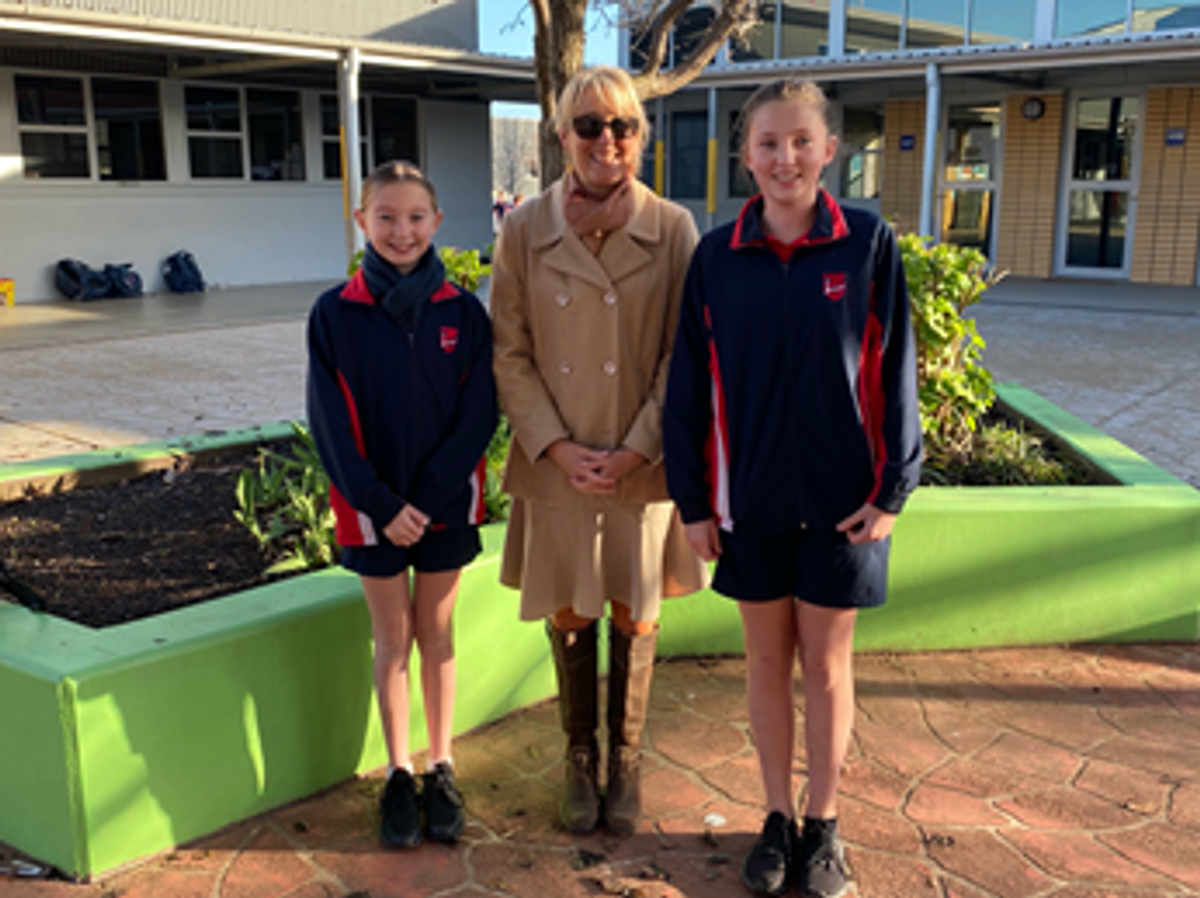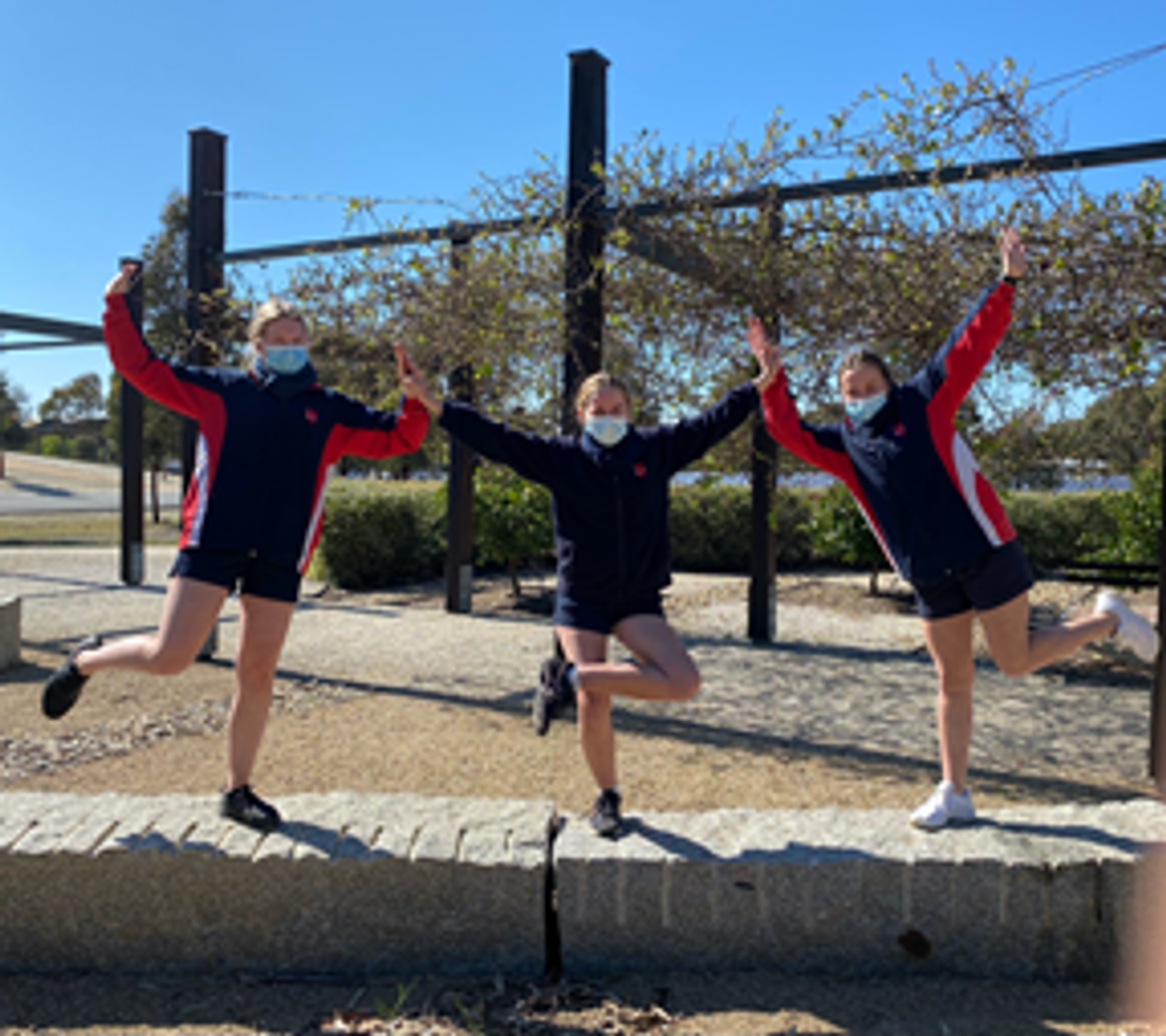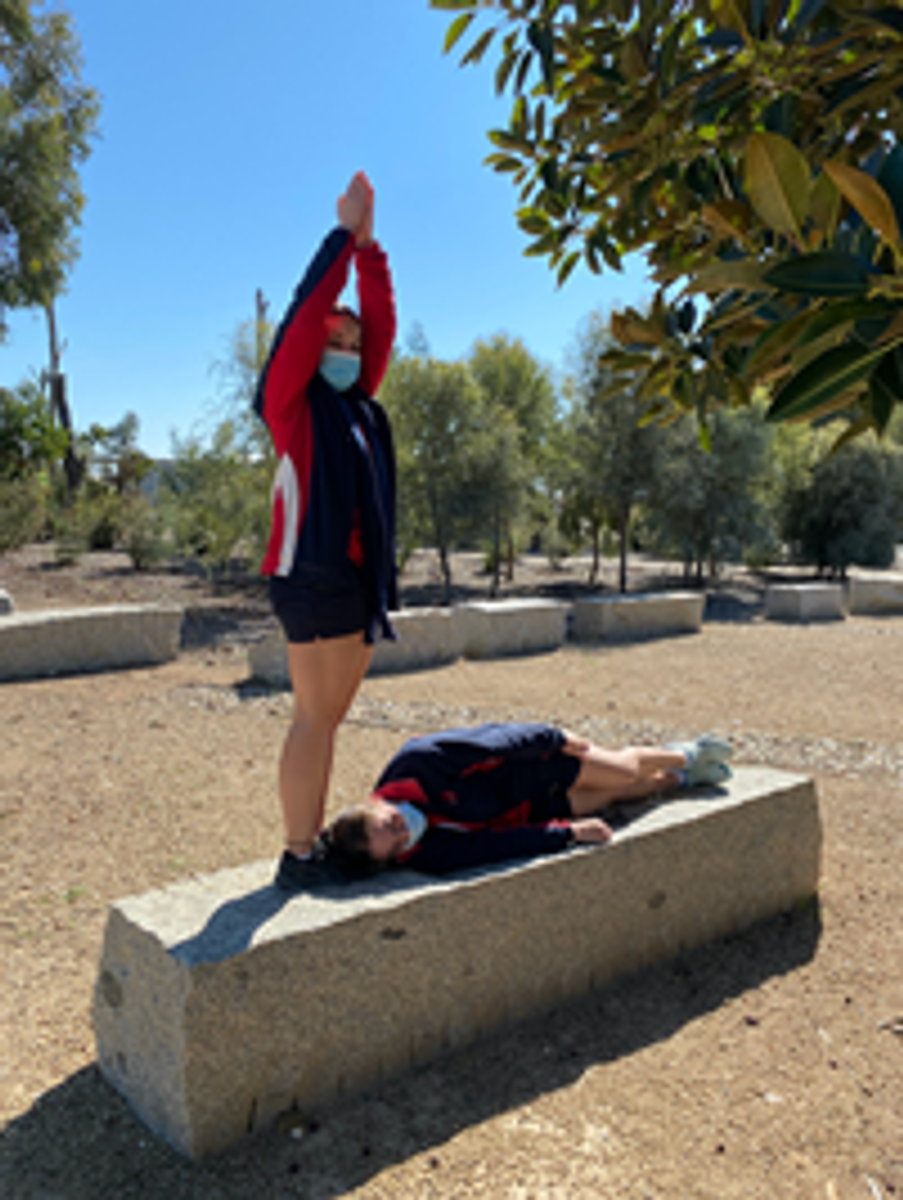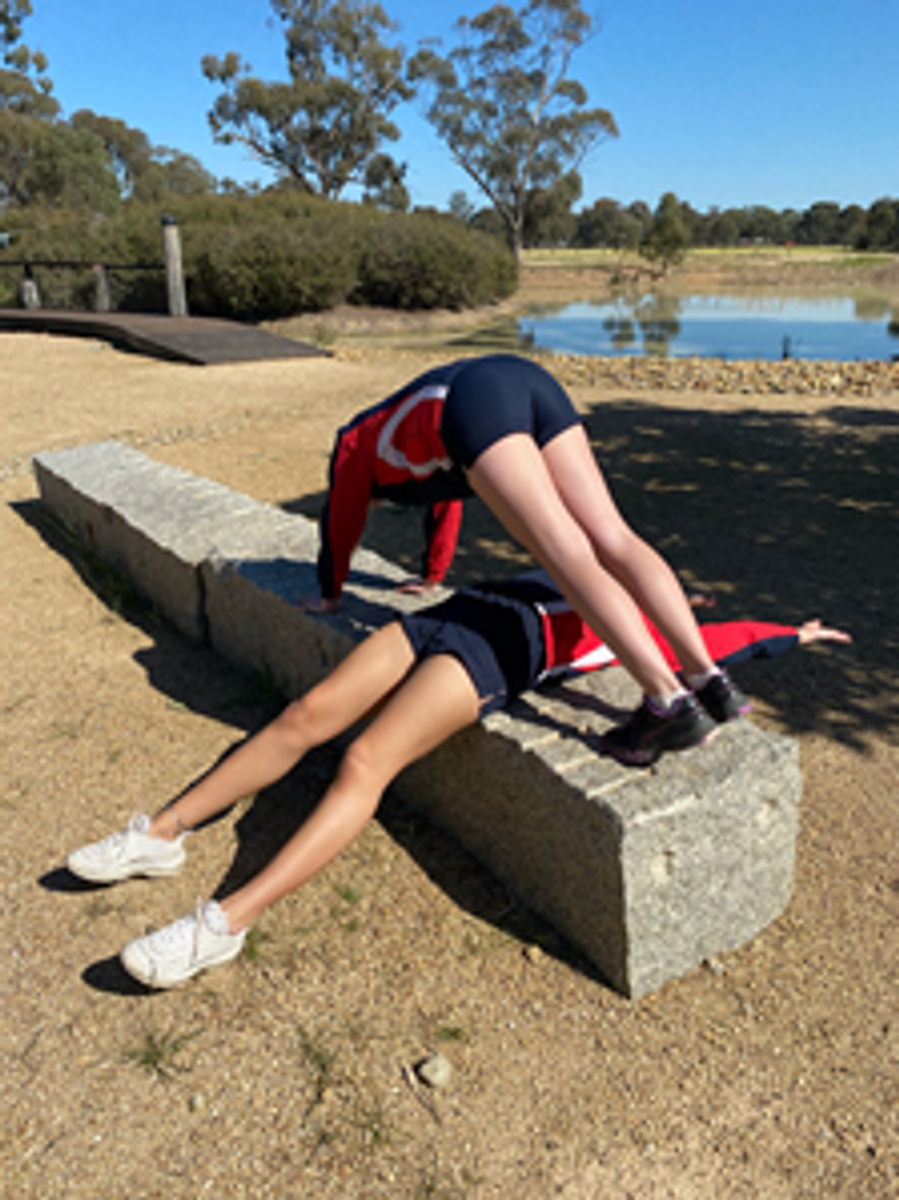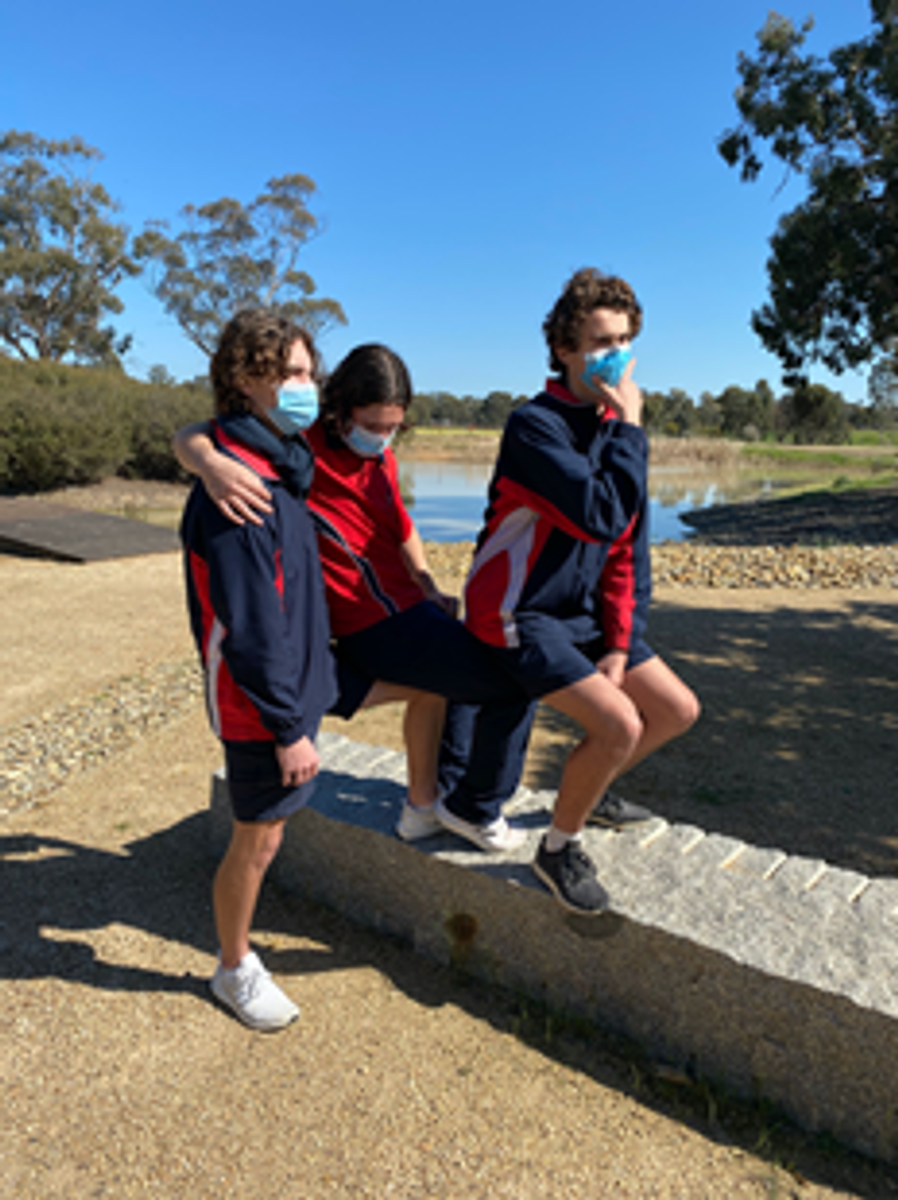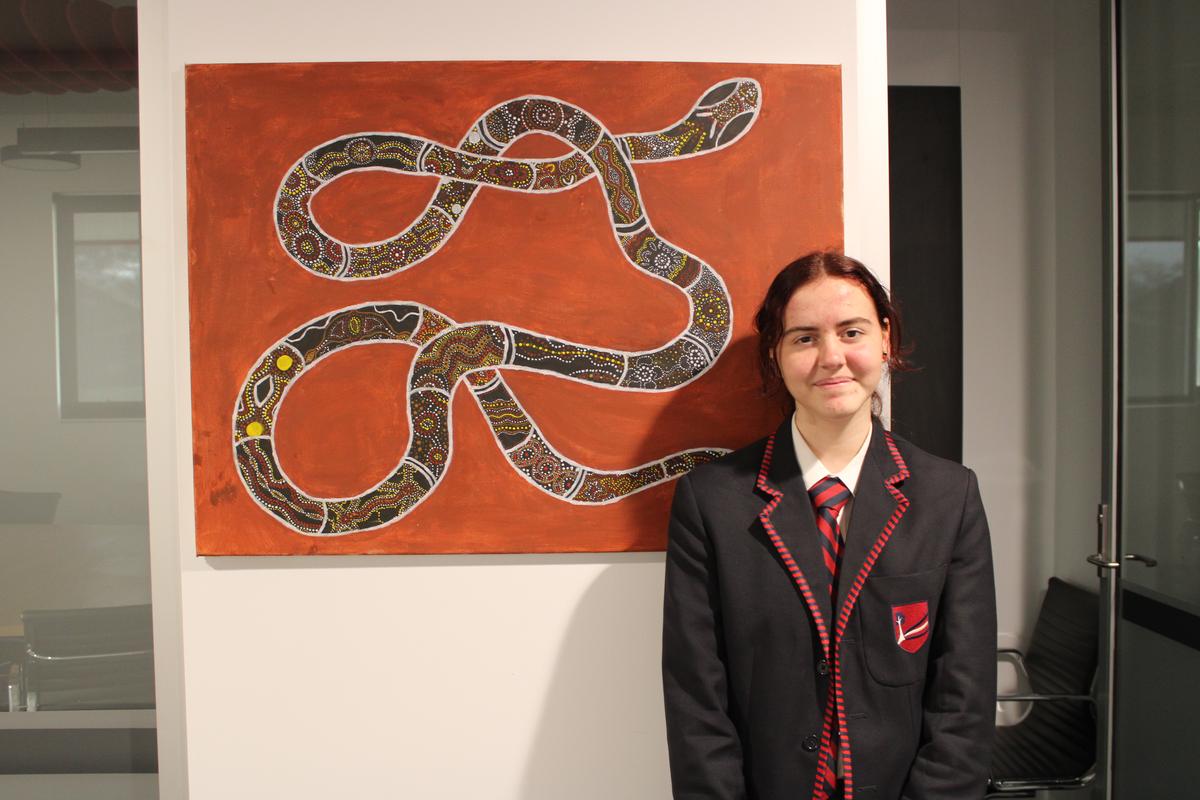From the DeputyPrincipal

It's All In The Numbers!
I was pondering the other day how I had been teaching so long that we now have children at school whose parents I taught! Although it might seem that this is a very confronting reality (and no, I am not 100 years old!), it is also one of the best things about teaching. I was excited to bump into Leni and Milla and get this photo (if younger brother Tighe was around at the time he would have been included too!) to signify how cool it is to be able to have a job that spans across generations. I taught their father “back in the day”. To follow the life paths of our students not only at school but beyond is something that I certainly cherish about working in the Education Profession.
Last week we ran virtual presentations for staff and the Echuca-Moama parent/guardian community. Our guest speaker was Michael Grose. Speaking of spanning generations, Michael has been sharing parenting tips with parents/guardians for many years and is a world-renowned speaker on many topics regarding parenting. Thanks to the support of Moama Bowling Club, we were able to bring Michael to our community to present on “Parenting Anxious Kids”.
Michael presented some great information and he has kindly made the recording available to our community until the end of October for those who missed the presentation and for those who would like to watch it again. See details and link below:
Parent/Guardian Presentation - Parenting anxious kids
Anxiety amongst children and young people is on the rise, yet many parents are unsure how to help. Research informs us that anxiety left unmanaged in childhood will almost always reoccur in adulthood. Fortunately, there’s so much parents/guardians can do to help children recognise, manage and minimise their anxiety.
Topic: Parenting anxious kids
Zoom recording link: https://vimeo.com/603675424/015432ce10
I recently read a great article that highlighted some of the very relevant strategies that also related to Michael’s presentation. I have reproduced this article below with permission as I think it might be a good read for everyone.
----------
GET INTO NATURE – it’s benefits may surprise you!
By Madeleine Mac Mahon
www.m3coaching.com.au
Did you know that there is a growing body of evidence supporting the benefits of spending time in nature, not just for human wellbeing but also performance effectiveness? The short story goes like this…..
We know that the human brain only has limited attentional capacity. When we direct our attention to one thing for too long we experience attentional fatigue and inhibition. From an evolutionary perspective, this was probably to ensure we didn’t get so consumed by one thing that we forgot to keep a look out for danger. Think about how you feel after hours of zoom calls, staring at a screen, reading emails, researching, writing essays, perfecting a new skill, playing computer games, or scrolling through social media. City living also has so many overwhelming sounds and images that just being outside draws on our attentional capacity to shut out the intensity of the sensory inputs. This often leaves you feeling drained and depleted, but may also result in other detrimental effects such as:
- High distractibility and impaired perception
- Inability to ‘step back’ from complex situations/problems and view from alternative perspectives
- Reduced ability to reflect and adjust behaviour when necessary
- Feelings of stress and irritability
During COVID, attentional fatigue is particularly problematic as our worlds are limited to a 5km radius, our face-to-face relationships are reduced to immediate households and technology dominates every aspect of our lives. This is all whilst we continue to try and juggle work, education, play and relationships.
So, what can we do to help manage this attentional fatigue and ensure attentional restoration?
First things first. Sleep is the cornerstone of attention-restoration. I can recommend the book ‘Why we sleep’ by Matthew Walker if you are not convinced of the importance of sleep to physical and mental performance – it is one of the most useful and interesting books I’ve read. However, sleep alone may not be enough. The good news is that there is another very promising source of attentional restoration. It is being in and appreciating nature. Most of us understand that being nature is quite calming and can be restorative, however few of us really understand the simplicity, accessibility, and effectiveness of nature as a resource to support our effectiveness and wellbeing.
‘So what?!’ I hear you say, ‘we’re all in lockdown so it’s not like we can get to the mountains or beach any time soon!’ Good point but stay with me….
The key question is what type of environment can deliver attentional restoration? Well, Stephen Kaplan from the University of Michigan (and leading researcher into Attention Restoration Theory) has identified 4 characteristics of restorative environments which currently include:
- Being away – this doesn’t necessarily require you to travel distance but does assume that the environment gives you a sense of ‘being away’ from where you are. This could be sitting around a fire in your backyard and staring into the flames or walking amongst trees in your local park.
- Fascination – This is crucial. There must be something in the environment that you find engrossing and that can hold your attention with ease. For example, watching a bird glide through the air, or watching clouds race across the sky or noticing the colours of flowers.
- Extent – it needs to give a sense of being a whole different world. This is easy to do in wilderness areas or at the beach however it doesn’t need to be such obvious settings. Even small areas can be designed to feel much larger and expansive. For example, a friends back garden that is different to your own, or a local park.
- Compatibility – The environment must have a special resonance with you. Nature is considered a strong restorative environment as nature and humans tend to have an easy and often intense connection.
The Japanese have long understood the restorative power of nature and designed the Japanese garden to provide such environments within densely populated cities. Other examples might include making a fire in the backyard and sitting watching the flames or laying on the grass and watching the clouds race across the sky or looking at the sky at night and trying to find shooting stars or riding your bike along a tree lined track and noticing every curve in the path. The key is to find or create the environment that meets the above criteria for you. Make sure it’s accessible and go there as often as you need – even if just for 15 minutes. You’ll know you’ve found it when you return from that place feeling just a bit lighter and a feeling that maybe you can cope after all.
TIP: Some people tell me that they can seek a restorative environment, but their mind is often too occupied to really appreciate it and get the restorative effect. If this applies to you, try this simple yet effective attentional training technique.
Next time you seek out your restorative environment do what is called the 5-5-5. That is, without any attachment or judgement do the following:
- See 5 things around you e.g., colours, shapes, or things
- Hear 5 sounds around you e.g., birds, cars, voices, wind, rain, horns
- Feel 5 things on you e.g., ground underfoot, toe on your shoe, clothes on body, wind on skin, glasses on face, itch on nose (you may scratch it ;)
This type of attentional training takes advantage of the fact that your brain has limited attentional capacity and uses it to squeeze out other thoughts and gently moves your focus to the world around you. This is also a useful technique anytime you want to quiet the chatter in your head – you can do it anywhere.
------------
After reading the above article I tried out the 5-5-5 activity with my Year 10 Psychology class over at the Botanical Gardens. This activity, as well as a human sculpture activity I also conducted, not only helped with attention restoration, it also was a Deep Learning activity. The students engaged in some very deep, creative, collaborative thinking and communicated their thoughts, ideas, analysis and conclusions of the activities very well in the pre and post discussion with the class. Most importantly the activities got them away from their screens and out into nature.
The above photos are the 5-5-5 activity (although we did a 5-4-3 version). Students called out their 5-4-3 observations. Prior to this activity students rated their “emotional/wellbeing mind” and then again post this activity. We then discussed the Psychology of this in relation to Positive Psychology’s PERMA, brain function and emotions.
For their human sculptures, students had to have a meaning/description for their art work.
As has been mentioned in a previous newsletter, this year we have started an Indigenous Awareness Student Committee. Although we have been restricted by lockdowns in the events and activities the committee planned to do this term, one of our members, Breanna McLeish, completed this wonderful piece of artwork for us to hang in the school. We have this hanging outside the Harkness Room.
The plaque reads:
The Rainbow Serpent has a significant role in the beliefs and culture of Aboriginal people in western Arnhem Land. It is connected to the abundance of food through propagation of plants and animals, as well as the governing of the community and the keeping of peace. Painted by Year 9 student, Breanna McLeish, a Wathaurong (Northern Victoria) young woman, 2021.
Have a safe and enjoyable break over the holidays everyone. Luckily for the Echuca-Moama and wider community, we have plenty of wonderful nature options close to our homes to experience and practise some attention restoration. Try the 5-5-5 activity with the whole family – the benefits might surprise you.
Mrs Kathleen Kemp
Deputy Principal

